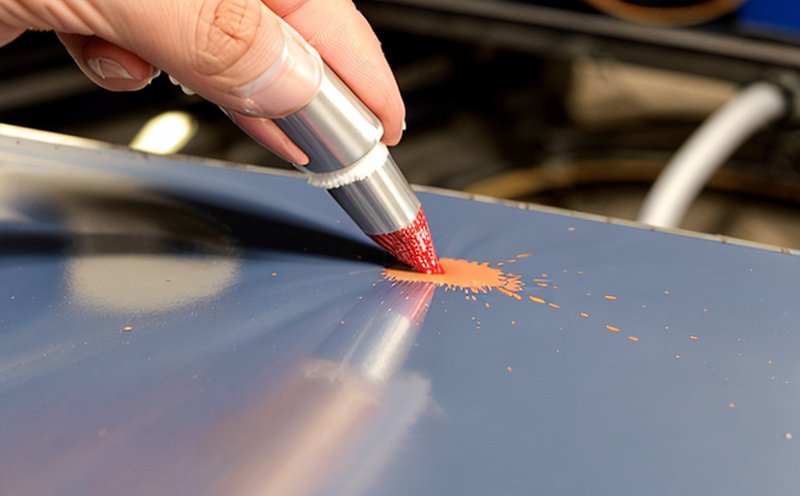ASTM D3359 Adhesion Testing of Furniture Coatings by Tape Method
The ASTM D3359 standard provides a method to evaluate the adhesion strength of coatings applied to furniture surfaces using a simple tape test. This technique is widely used in quality assurance and research settings to ensure that finishes on furniture are durable, aesthetically pleasing, and meet industry standards.
Adhesion testing by the tape method involves applying adhesive tape to the dried coating film and then rapidly peeling it off at a 180-degree angle. The amount of adhesion failure is recorded as the percentage of the area that pulls away from the substrate with the tape. This test is particularly useful for assessing both the initial application quality and long-term durability of coatings.
The ASTM D3359 procedure allows laboratories to identify any weak spots or areas where the coating may fail over time, which can be critical information in product development and quality control processes. The method’s simplicity also makes it an accessible tool for quality assurance departments and R&D teams looking to implement robust testing protocols.
For furniture manufacturers, this test is essential as it helps in selecting appropriate coatings that not only enhance the appearance of their products but also ensure they are long-lasting and resistant to wear and tear. By adhering to standards like ASTM D3359, companies can demonstrate compliance with international quality requirements, thus enhancing brand reputation and customer trust.
The tape test is particularly valuable in identifying potential issues early in the product lifecycle, allowing manufacturers to address these concerns before full-scale production begins or when new materials are introduced. This proactive approach ensures that any flaws in coating adhesion are corrected at an earlier stage, reducing costs associated with rework and customer complaints.
While ASTM D3359 is a relatively straightforward method, it requires careful attention to specimen preparation and execution of the test procedure to ensure accurate results. Specimens must be prepared according to specified guidelines, including drying times and environmental conditions, to prevent any bias in adhesion strength measurements.
The tape method’s simplicity belies its importance; it serves as a critical quality check that can significantly impact product performance and customer satisfaction. By consistently applying ASTM D3359 standards during production, furniture manufacturers can ensure their products meet the highest industry benchmarks for durability and appearance.
- Identifies weak spots in coating adhesion early on
- Ensures compliance with international quality requirements
- Reduces costs associated with rework and customer complaints
- Aids in selecting appropriate coatings that enhance both appearance and longevity
In summary, ASTM D3359 provides a reliable method for assessing the adhesion strength of furniture coatings. Its simplicity and effectiveness make it an indispensable tool for quality assurance and research teams within the furniture sector.
Industry Applications
The ASTM D3359 tape test is broadly applicable across various subsectors within the furniture industry, including but not limited to upholstery manufacturing, wood finish production, and decorative paint application. This method helps ensure that coatings applied to different types of substrates, such as leather, fabric, and solid wood, are adherent and durable.
For upholstered furniture manufacturers, the tape test is crucial for assessing the adhesion between the protective coating and the underlying upholstery material. This ensures that the finish remains intact during normal use, protecting both the aesthetic appeal and durability of the product.
In solid wood furniture manufacturing, this method helps evaluate the adhesion strength of lacquers or varnishes applied to the surface. Proper adhesion is essential for maintaining the integrity of the finish over time, which can significantly impact the longevity of the furniture piece.
For decorative paint producers, ASTM D3359 provides a reliable means of testing the adhesion of paints used in high-traffic areas or exposed surfaces on furniture. This ensures that the finishes remain intact under conditions likely to cause wear and tear, thus enhancing customer satisfaction with the product's performance over time.
The tape test is also useful for quality assurance teams working on new product development projects within the furniture sector. By utilizing ASTM D3359 during early stages of product design, manufacturers can identify potential issues related to coating adhesion before full-scale production begins. This allows for timely corrections and improvements, ensuring that final products meet both internal standards and external regulatory requirements.
Overall, the ASTM D3359 tape test plays a vital role in maintaining high-quality standards across all aspects of furniture manufacturing, from raw material selection to finished product quality control.
Why Choose This Test
- Precise evaluation of coating adhesion on furniture surfaces
- Cost-effective and easy-to-implement testing method
- Allows early identification of potential issues in the coating process
- Ensures compliance with international quality standards
- Supports ongoing research and development efforts
Selecting ASTM D3359 adhesion testing for your furniture coatings offers numerous benefits, including improved product durability, enhanced customer satisfaction, and streamlined regulatory compliance. By incorporating this test into your quality assurance protocols, you can ensure that your products meet the highest industry benchmarks for performance and longevity.
Customer Impact and Satisfaction
The results of ASTM D3359 adhesion testing have a direct impact on customer satisfaction by ensuring that furniture coatings are both durable and aesthetically pleasing. When customers receive products with consistently good coating adhesion, they are more likely to be satisfied with their purchase and recommend the brand to others.
Moreover, by identifying any weak spots early in the production process, manufacturers can address issues before they become a problem for end-users. This proactive approach not only enhances product quality but also reduces warranty claims and returns, further boosting customer satisfaction.
In addition, adhering to international standards like ASTM D3359 demonstrates a commitment to excellence that resonates with discerning customers who value high-quality products. Such adherence can help build trust between the manufacturer and its customers, fostering long-term relationships based on reliability and quality.
Overall, the outcomes of ASTM D3359 adhesion testing contribute significantly to customer satisfaction by providing a reliable measure of product performance that meets or exceeds industry expectations.





